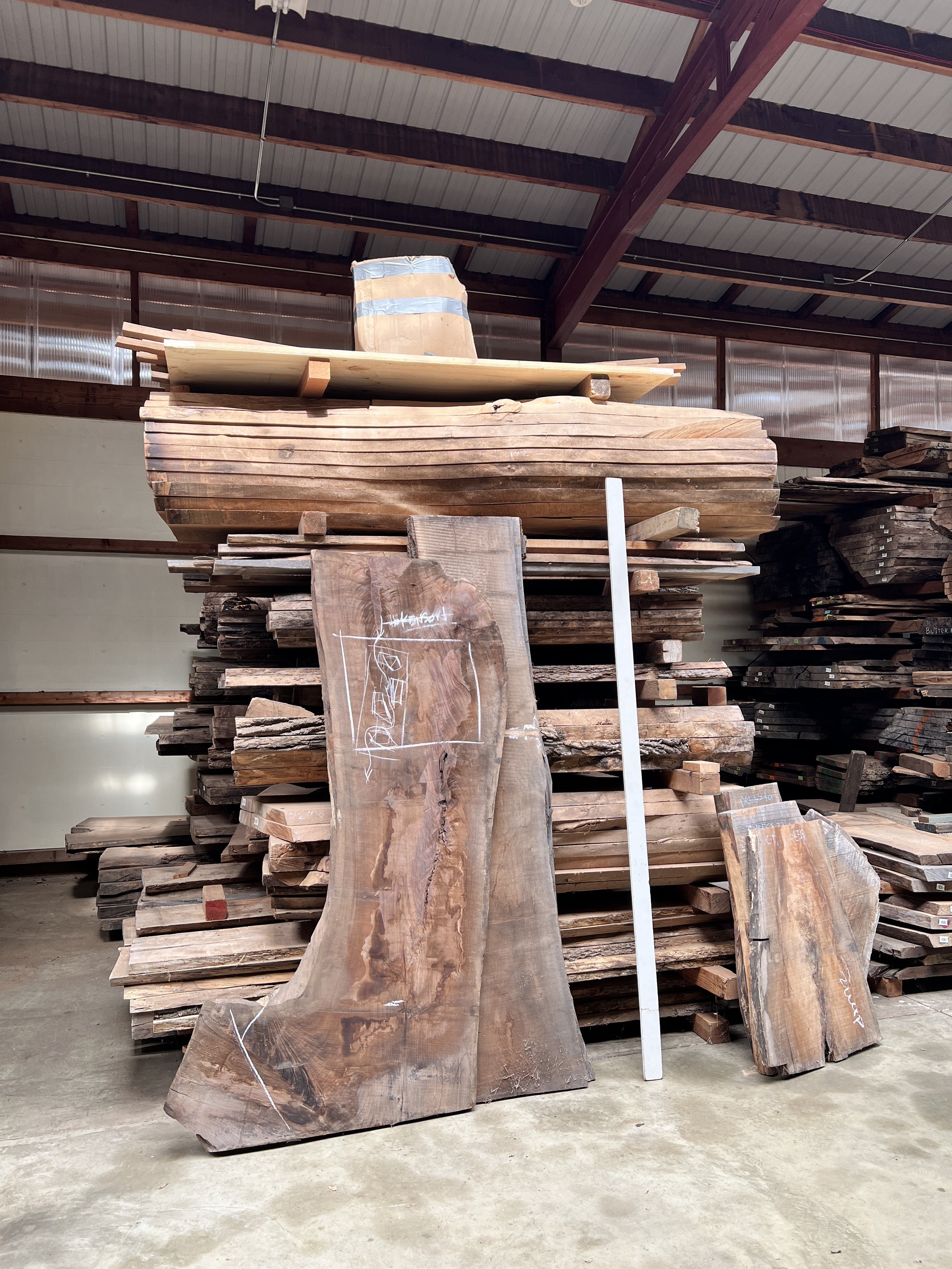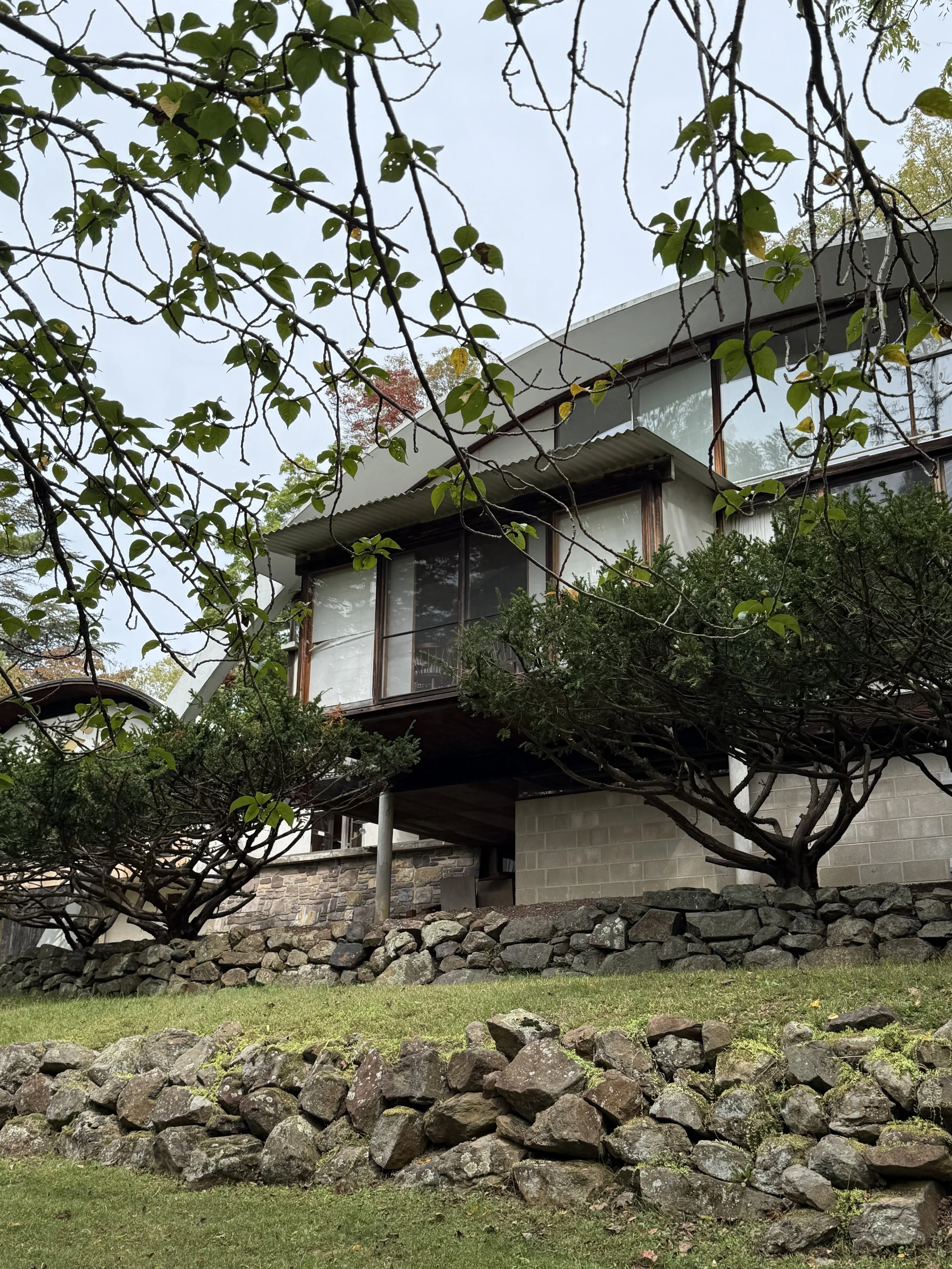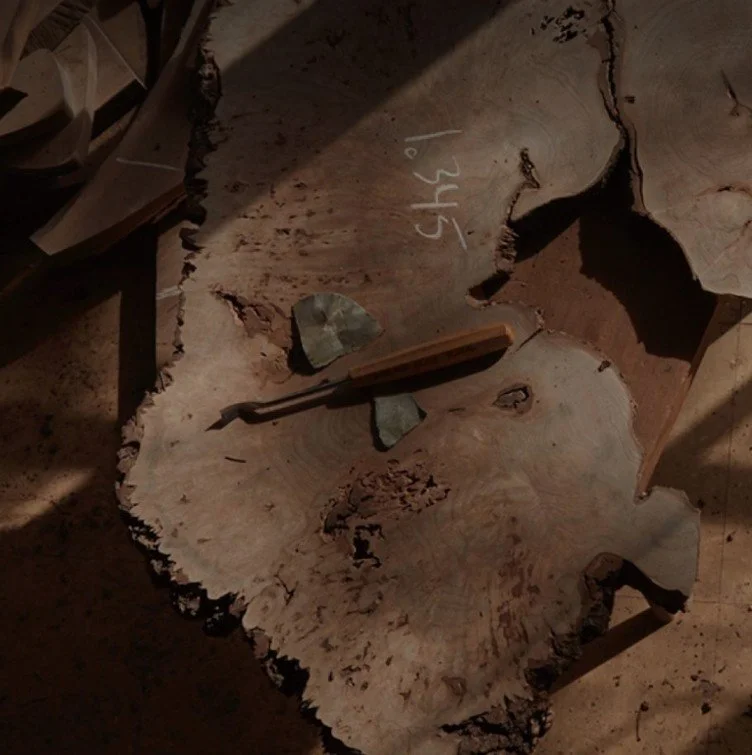Exploring Nakashima Woodworkers: Timeless Craftsmanship in Wood Furniture
Tucked into the rolling hills of Bucks County, Pennsylvania, just outside New Hope, lies a place that feels quietly extraordinary: the Nakashima Woodworkers campus. More than a cluster of studios and workshops, this site is a living embodiment of a philosophy, a family’s legacy, and a way of making that continues to influence design worldwide. Our recent visit offered not only a glimpse into George Nakashima’s enduring vision, but also a reminder of what furniture can mean when it is treated with reverence for the material, for the maker, and for the people who will live with it.
What Nakashima Furniture Brings to a Room
Nakashima furniture offers more than functional beauty. A table or chair by Nakashima grounds a room, bringing warmth, tactility, and presence. The organic edges and grain patterns remind us that design is not abstract… it grows from the earth. Pieces can soften a modern space, add soul to minimalism, or hold their own amid eclectic collections. Above all, they bring authenticity. In a world where furniture often feels disposable, Nakashima’s work insists on the opposite: that what we live with should be meaningful, enduring, and deeply connected to its origins.
The Custom Design Process
Nakashima furniture is not designed for mass production; it is conceived as a collaboration. Each commission begins with wood selection. Slabs of walnut, cherry, and rare burls are stored in sheds across the property, air-drying for years until they are ready to be used. Clients are invited to walk the grounds and choose boards themselves, making the selection deeply personal. From there, designers in the workshop sketch options that highlight the grain, shape, and natural contours of the wood.
The process is deliberate and slow, emphasizing not only craftsmanship but also dialogue. Furniture is designed to fit into the rhythms of a client’s life: a dining table that becomes the center of daily gatherings, a bench that quietly anchors an entryway, a desk that supports decades of work. Pieces are made to be lived with, not simply admired. The aim is longevity, furniture that will not only last but become heirlooms.
George Nakashima’s Story and Philosophy
George Nakashima, one of the most revered woodworkers of the twentieth century, began his career as an architect before turning toward furniture design. His journey took him from the École des Beaux-Arts in Paris to ashrams in India, where he studied Vedic philosophy, and eventually to internment camps during World War II, where his craft deepened under the mentorship of a Japanese carpenter. After the war, he established his studio in New Hope in 1945, shaping a body of work that challenged both modernism’s austerity and industrial standardization.
At the core of his philosophy was a belief that wood is alive, even after being cut, and that each board contains a spirit deserving respect. Rather than concealing knots, cracks, or irregular edges, Nakashima celebrated them. His use of butterfly joints to stabilize fissures, or his practice of leaving natural edges untouched, elevated imperfection into beauty. In an era that often prized sleek uniformity, his work was and is an invitation to embrace the poetry of the natural world.
The Family Legacy
Today, the studio is led by George’s daughter, Mira Nakashima, who we were privileged enough to meet on our visit. She carries forward both George’s design aesthetic and his ethos. She has expanded the vocabulary of the workshop, creating new pieces in dialogue with her father’s, and working with the same reverence for material and process. The Nakashima family’s involvement has ensured continuity, not only in the craft itself but in the values that shape it: humility, discipline, and respect for the relationship between maker and client.
The Grounds and Buildings
The campus itself embodies Nakashima’s ideals. Over several decades, George designed and built a collection of structures consisting of studios, showrooms, the reception house, a reinforced pole barn, and the striking Conoid Studio. With these structures, he merged modernist principles with vernacular materials. Most are oriented to the south, maximizing natural light and connecting interior spaces to the landscape.
The architecture is modest but resonant. Timber beams, concrete forms, and simple glazing create environments that frame the work without overshadowing it. Walking from one building to another feels like moving through a meditation: the grounds are serene, shaded by mature trees, punctuated with outdoor sculptures, and enlivened by the art of friends like Toshiko Takaezu, Harry Bertoia, and Ben Shahn. The Arts Building, designed as a cloister, houses Shahn’s mosaic mural, infusing the space with another layer of meaning. Everywhere, there is a sense of harmony between building and land, craft and spirit, art and life.
Why the Visit Matters
Visiting the Nakashima campus is transformative. To see the slabs stacked in lumber sheds, the careful joinery in progress, the tranquil studios where pieces take shape is to witness a philosophy made tangible. The campus reminds us that design at its best is not about trends or spectacle, but about values: patience, respect, humility, and the pursuit of beauty rooted in nature.
For us, the experience was profoundly inspiring. As designers, it reinforced the importance of continually revisiting the sources of craft and vision that shape our field. As admirers, it reminded us how much one family’s dedication can contribute to global culture. And as lovers of interiors, it affirmed how a single piece of Nakashima furniture can transform not only a room but the way we inhabit it.














